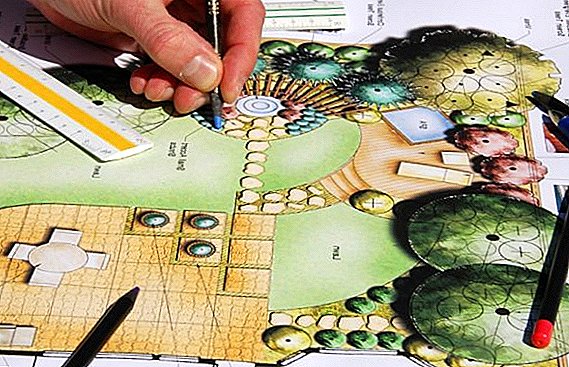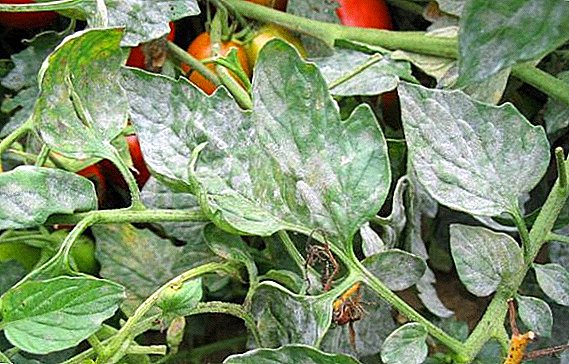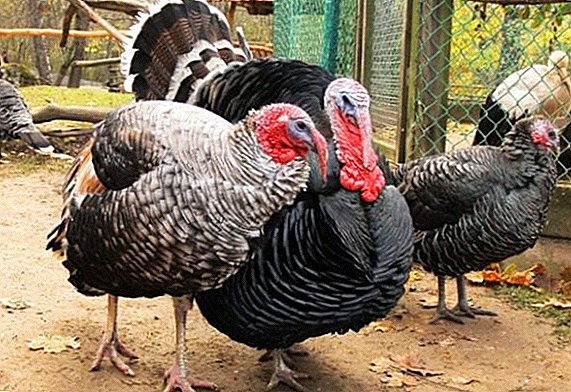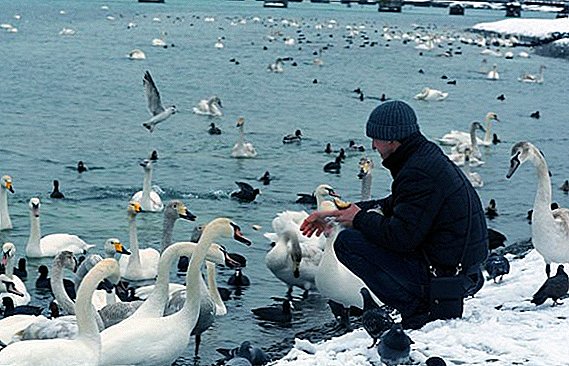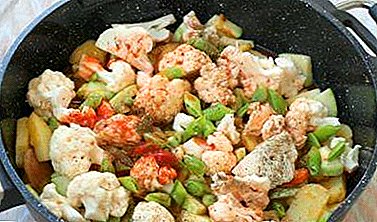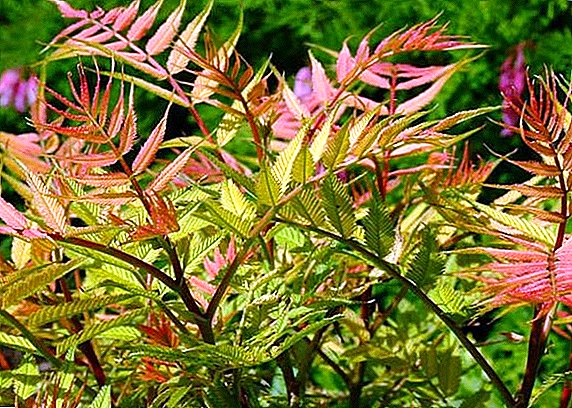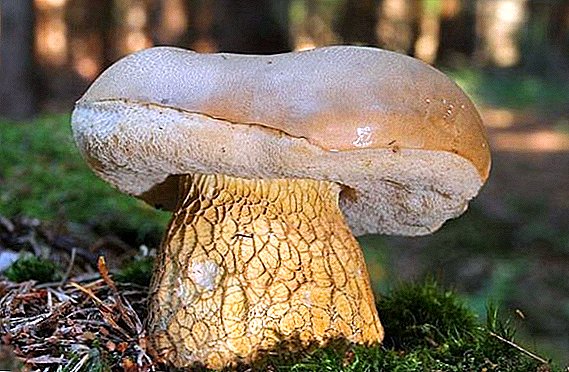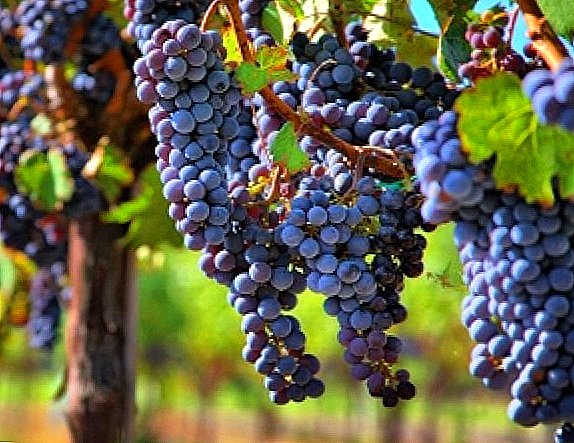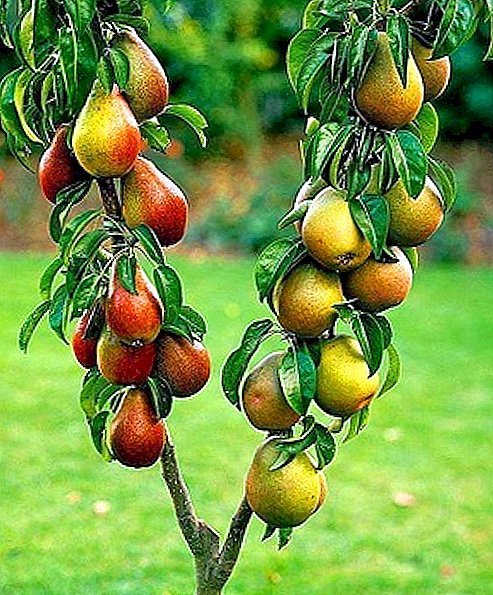
Gardeners of many countries with passion are exploring in practice a new, fashionable trend in horticulture - the cultivation of columnar trees. Amazing, neat gardens with rows of graceful trees, more reminiscent of tree-studded trees. Kolonovidnye apple trees, pears and other fruit trees, short in growth, the crown of plants stretched upwards, there are almost no side branches. A careful observer, having examined them more closely, will see that despite the small growth and overall miniature, these are all the same traditional fruit trees that are familiar to everyone. Let us try to understand how such unusual and promising gardens appeared, what kind of columnar trees are and what are their advantages over traditional plantings.
Did you know? One of the recognized seven wonders of the world in the memory of humanity are the hanging gardens of Semiramis. This grand legendary building amazed with multi-tiered gardens with diverse vegetation and sparkling waterfalls. They were built in 605 BC and over time were destroyed by flooding.
Appearance history
Colony-shaped fruit trees have come to the rest of the horticultural world from Canada. The Canadian farmer in 1964 became the pioneer of an unusual tree form. The farmer noted that one of the young Macintosh apple trees has unusual branches extending from the main stem at an acute angle. There were no horizontal processes on these branches, but they were literally covered with apples. 
The surprised farmer invited a breeder and instructed him to study an unusual apple tree. After some time, after the breeding work was carried out, a successful result was obtained, it became a variety of the columnar apple "Vazhak". He loved gardeners and became widespread in many countries. Gradually, new varieties of dwarf trees began to appear.
The main advantages of the columnar fruit trees
A new variety of miniature fruit "dwarfs" has gained immense popularity due to the fact that when comparing the yields of the gardens of the same size (traditional and columnar) the superiority of kolonovidnye receive profitability and convenience.
You may also be interested in such kolonovidnye trees such as: kolonovidnaya plum, kolonovidny apricot.With the same care, the yield of a garden with columnar plants is several times higher than that of ordinary, tall apple or pear trees.
Since the plants are low, they are easier to process from pests, it is easier to conduct annual pruning of branches, it is convenient to collect ripe fruit. And the main argument in favor of trees with a narrow and elongated crown is that their fruiting begins from the second or third year after planting, and ordinary fruit trees begin fruiting for 4-5 years. 
On an area of one hectare, you can place a garden of two thousand colonic plants, whereas ordinary fruit, with a wide crown, will fit no more than 400 trunks.
Consequently, more plants are bearing fruit on the same area, and the costs of maintaining and caring for them are much less.
Did you know? The great Russian scientist, breeder Ivan Vladimirovich Michurin (1855-1935), not only had a great scientific and practical knowledge base in plant breeding and crop production, but also had a rare, almost mystical sense: conducting an inspection among the planted several thousand seedlings, on the run, pointed with a cane to the selected plants - this, this and this seedling to remove! The assistants obeyed and cleaned them, but wanting to check the competence of the scientist, several times they tried to plant the plants cultivated by Michurin - not once, not a single sapling had taken root.
Variety of varieties
Varieties of columnar fruit trees are divided into two types:
- seed dwarfs that are grown from seeds and have a natural short-growth gene (dwarf gene);
- grafted dwarfs, they are produced by grafting branches from the parent colonic plants to the root system of a related ordinary tree.
Important! A miniature garden not only enters into fruiting time more quickly, but also dies, grows old and dies earlier. After 10-12 years, you need to rejuvenate planting, uprooting old trees and planting new ones.Popular varieties of columnar apple trees: Apple "Currency" - plant height 1.5-2 meters. The fragrant fruit is medium in size (up to 250 grams), light yellow in color with slightly red barrels and juicy, not firm, tasty pulp. The variety has good resistance to the main fruit diseases. The time of ripening of the crop is the last dates of September, the yield is high, the fruits have good keeping quality during winter storage;

Apple "Arbat" - dwarf variety, small fruits (100-120 grams), skin and pulp of apples of dark cherry color. The apples are tasty and juicy, but the variety is not intended for long-term storage; when laying for the winter it deteriorates quickly; 
Apple "President" - the variety has excellent winter hardiness and is not susceptible to fungal diseases and insect pests. The fruits are small and medium size, the weight of apples is 140-250 grams. The color of the skin varies from white to pale yellow, like that of the “White filling”, the flesh is juicy, the color of the flesh is light. Harvest time begins in mid-September. 
Popular varieties of columnar pears:
Pear "Decor" - dwarf plant, does not exceed a height of 1.5-2 meters. Pears of medium size (150-200 g) have a pronounced pear aroma and sweetly sour pulp. The fruits are very juicy, in full ripeness the peel is covered with burgundy blush. The ripening time is the second half of August. This remarkable variety has a significant drawback - the fruits are stored no more than 10-14 days. 
Pear "Sapphire" - a variety with good frost resistance (up to -20 ° C). It has a good yield, ripe pears are painted in three shades smoothly moving into each other (green, yellow, red). The harvest of this variety has a partial keeping quality, can be stored without loss until December. 
Proper planting of columnar trees
Since the colony plants have practically no side branches, they can be planted much thicker than ordinary tall, sprawling trees, but in order to choose a planting scheme for a dwarf garden, all nuances should be taken into account:
- will the crop be harvested by hand, or should a sufficient distance be provided for the passage of vehicles;
- Whether garden planting is planned according to a single-row or two-row pattern with a spacing of one lane.

Plant miniature fruit plants in spring and autumn. Spring planting is carried out in the first half of April, as soon as the snow completely disappears from the ground and the soil warms up. However, gardeners with experience claim that the autumn planting of "dwarfs" is preferable, since during the autumn and winter the tree has time to settle down and adapt to the new conditions. During the autumn planting, it is important to withstand a reasonable time and to disembark no later than September.
Once the variety is selected and the desired seedling purchased, you need to decide on the landing site. All fruit trees love undimmed, sunny places, reliably covered from the icy northern winds.
Planting pits need to be prepared in advance according to the number of purchased seedlings. Ideally, during spring planting, it is advisable to dig up holes in the fall, while during the autumn planting, in the spring. Planting pits are dug up according to the planting pattern chosen by the gardener, taking into account the distance between adjacent plants and row spacing.
The depth of the planting pit should be 40-50 cm, and the width of the groove is made taking into account the fact that the roots of the tree that is planted should in no way be wrapped or bent. When the recess for planting is dug, fertilizers are applied to the bottom. This may be rotted cattle manure, compost. For one planting pit, two shovels of such fertilizer are sufficient. The selected composition is thoroughly mixed with the soil, which is located at the bottom of the planting pit. 
A bucket of water is poured into the finished pit, waiting for it to soak into the ground and plant a tree. The planted plant is watered again under the root (approximately 5-7 liters).
Important! When planting a fruit tree, care must be taken to ensure that the vaccination site is not in any case covered with earth.
Care features
After planting the colony-shaped fruit and berry trees, measures for the protection and care of them are no different from the care of a regular garden. But, of course, there are some subtleties that not too experienced gardeners need to know:
In the first year
Sometimes planted "settlers" can dissolve the flowers in the year of planting. This threatens with a general weakening of the sapling, its root system and, as a result, the future crop shortage. Such untimely blooming flowers are recommended to be removed, avoiding fruit set.
Yield formation
In subsequent years, the young garden will bloom profusely. This is a beautiful sight, but it does not carry a comic threat to the viability of young seedlings. In place of each flower, with favorable weather conditions, a fruit ovary is formed. If the embryos of the fruit are set up a lot of them need to be removed using a garden shears (manually). A young plant can not always bear too much fruit load. Therefore, when forming the load of a tree with fruits: from a bunch in which there are 5-7 small fruits, you need to leave only two. 
Coloniform trees have a root system located parallel to the surface of the soil and shallow beneath the ground. During the summer season, the land near the tree trunk of young saplings and in between rows is treated from weeds (weed). During this treatment, mechanical damage to the shallow roots can occur. This threatens the death of the plant. To avoid damage to the roots and save on the manual labor of workers hired for weeding, all the land in the garden must be tinned. It is also possible to cover the tree trunks with mulch materials: sawdust, shavings, sunflower or peanut husks.
Did you know? Zaluzhennaya soil - a substrate covered with perennial short growing and thick grass (cereals). Such a soil covering prevents the growth of weeds in the garden and prevents the evaporation of moisture from the soil.To protect against pests, fruit trees are treated in early spring (before bud break) with insecticides. It is easy to organize the protection of the garden and with the help of biological preparations and traps. In between rows you can plant plants with phytoncidal properties (marigolds, melissa, dill), they will scare away aphids and other insects that harm the garden insects with a specific smell.

During the mass summer of insects, traps are hung on the branches of the garden - containers with sweet compotes diluted in half with vegetable oil. Insects, attracted by the scent of fruit land in a trap, their wings envelop sticky oil and the pest can no longer fly.
At pristvolny circles of fruit trees are established trap belts. Such a belt is fixed on the trunk, its surface is smeared with a sticky and sticky substance that does not allow ants to put aphids on the leaves of the tree.
Watering Young saplings need regular watering, but it is not necessary for a gardener to spend the day and spend the night with a hose in his hands in the garden. If the garden is laid in arid areas where rains rarely occur, arrangement of drip irrigation for plants is possible. If the garden is small, it can be watered and under the root, in the basal recess, which does not allow water to spread. Usually, young saplings have enough watering during planting and two or three waterings at the root during the first two months of life. 
In the first year of life, one liter of water (for one irrigation) is supplied with 2 liters of water. But seedlings can not be poured, as excessive moisture threatens to rot young roots. The gardener should be wise to treat irrigation and take into account the amount and abundance of precipitation. Top dressing If before planting the seedlings, fertilizers (nitrogen, potash) were applied to the planting pits, then such feeding for the young seedling will be enough for the entire first year of life.
If the gardener believes that insufficient amount of fertilizer has been applied, then in the process of summer vegetation, the seedlings can be fed. Such fertilizers are often combined with irrigation. In the water used for irrigation, you can add: liquid fertilizer based on chicken manure or slurry, or use complex mineral supplements for fruit trees.
Important! Even if the soil is not sufficiently fertilized, young saplings are best not to feed in the first year. The root system of the first-year plants is still weak and weak, it can be “burned” with an incorrectly calculated dose of fertilizers.Pruning A gardener with pruning sets the desired shape for a columnar fruit plant. Young annuals or biennial trees are formed by strong pruning. Pruning branches, gardener leaves only two buds on each of them. In the future, this type of annual pruning is no longer practiced. 3-5 strong buds are left on strong branches, and weak branches are not cut off at all (they just pinch the tips with a sheath).

Already formed adult plants are cut poorly, only to maintain a given shape.
Spring pruning of apple-shaped trees and pears is carried out in April. Summer pruning is carried out from mid-July to mid-August. 
Application in landscape design
Garden area can be unusual to decorate with the help of columnar plants. The crown of such trees can be formed depending on the desire of the gardener.
You may also be interested in such ornamental apples and pears as: Nedzvetskogo apple tree and royalties, Ussuri pear.Fruit dwarf often planted for decorative purposes in children's playgrounds near small houses and swings. The result is an elegant doll town. However, to decorate the landscape are usually used not fruit, and coniferous and deciduous columnar trees. The variegated deciduous plants are combined with trees with flowing down branches, trees with spherical and narrow spear-shaped crown - with unusually decorated hedges (with leafy arches, towers and labyrinths). Unusual columnar plants are shaded by mounds of pebbles and stones, or near large boulders.
Did you know? An interesting feature of colonic plants with a crown shaped in the form of balls is the creation of the illusion of a slightly mountainous area on a completely flat space.
Almost all varieties of popular colony-shaped fruit trees are very resistant to drought and frost, have excellent resistance to fungal diseases and scab, high yields and tasty fruits. It is these qualities of colony-shaped trees that have won the recognition of gardeners around the world, and therefore they are worth growing. If you provide a dwarf garden with decent care and care, it will delight the hosts for many years with the beauty of graceful plants and decent crops.


